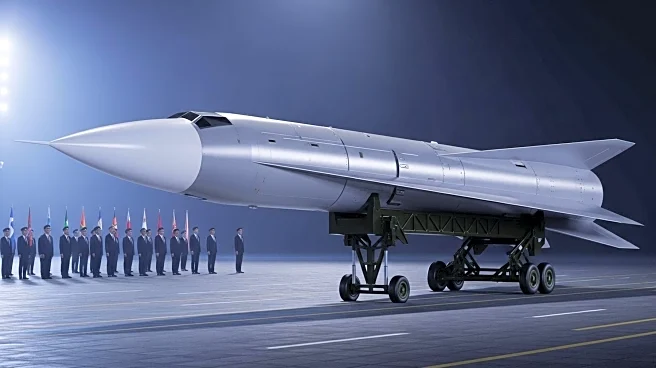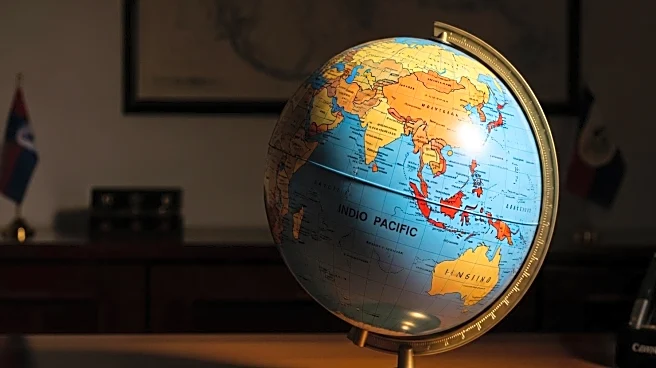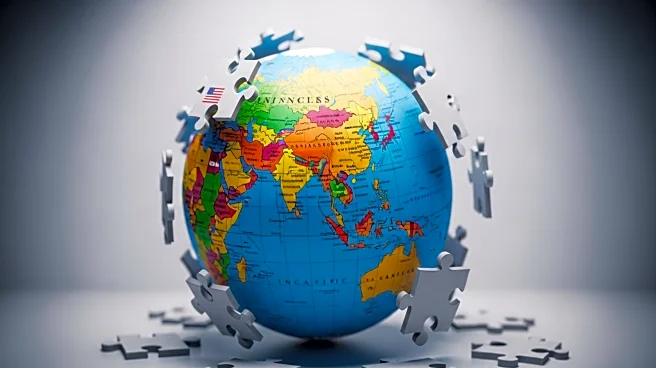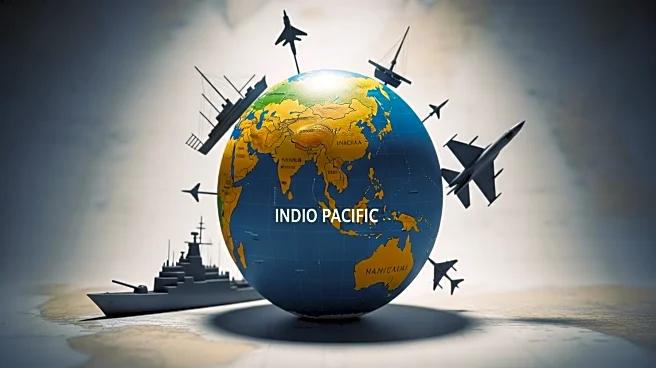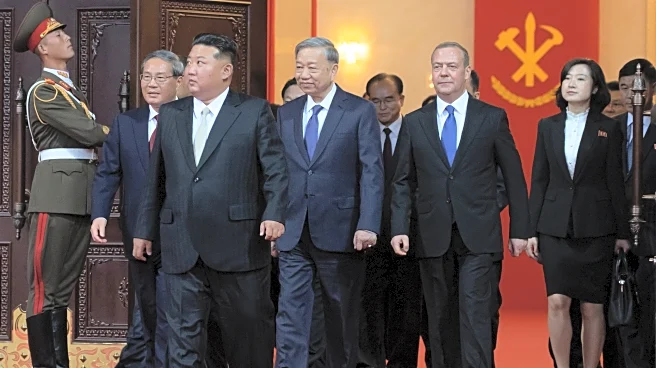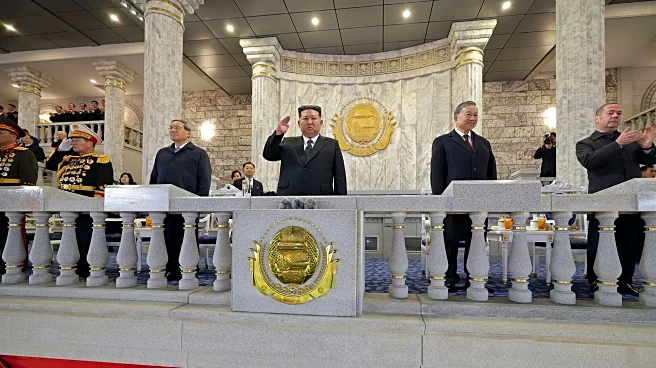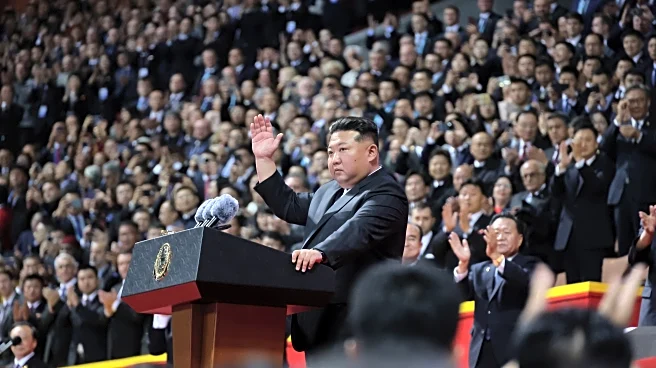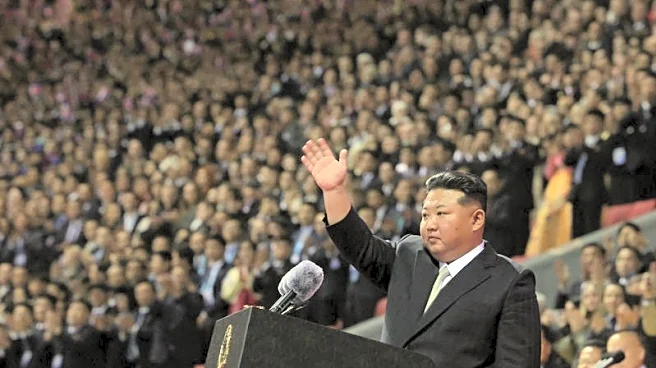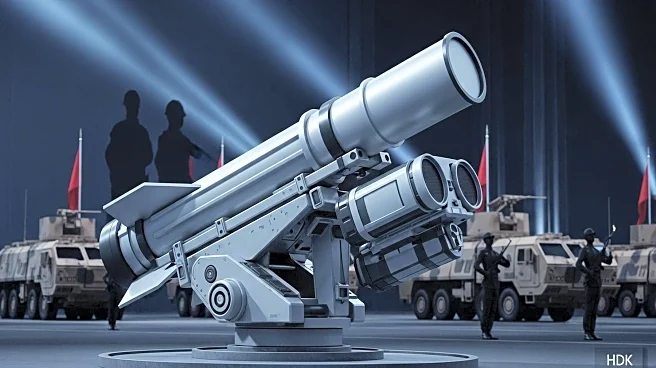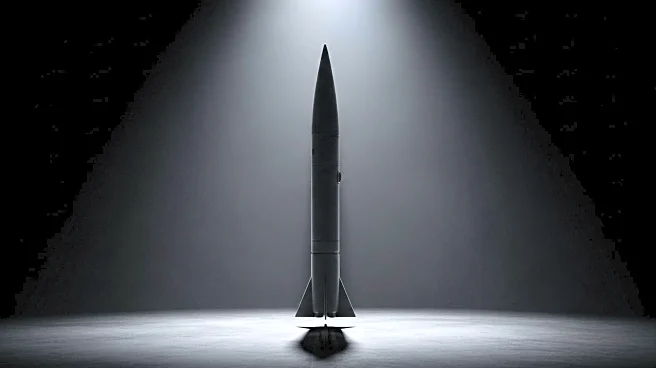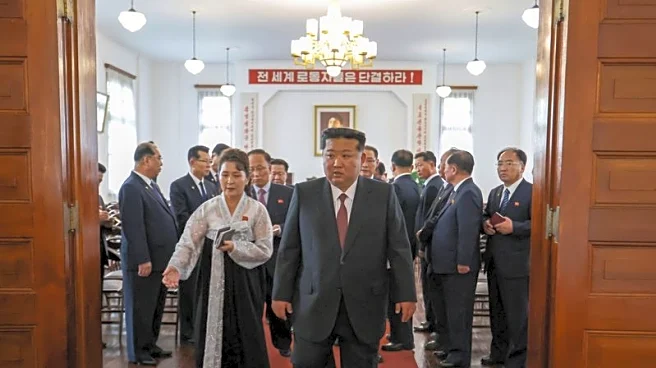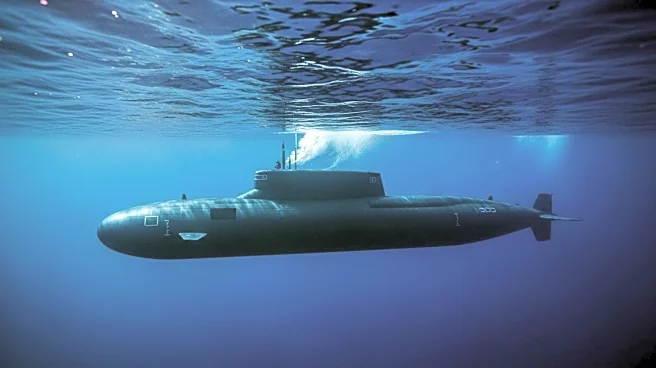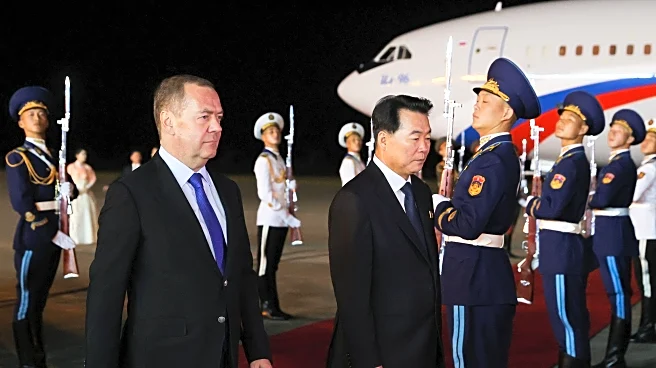What is the story about?
What's Happening?
North Korea held a military parade on October 10, 2025, to commemorate the 80th anniversary of the founding of its ruling Workers' Party. The event featured the debut of the Hwasong-20, a new intercontinental ballistic missile described as North Korea's most powerful nuclear strategic weapon system. The parade was attended by high-level foreign dignitaries, including Chinese Premier Li Qiang, Russian Security Council Deputy Chairman Dmitry Medvedev, and Vietnamese Communist Party General Secretary To Lam. North Korean leader Kim Jong Un emphasized the need for the military to evolve into an invincible force, although he did not directly mention the United States or South Korea in his speech. The parade also showcased other military assets, including shorter-range ballistic, cruise, and hypersonic missiles, as well as tanks, artillery systems, and drones.
Why It's Important?
The unveiling of the Hwasong-20 missile underscores North Korea's ongoing efforts to enhance its military capabilities, particularly its nuclear arsenal. This development is significant as it highlights North Korea's potential to target the continental United States and its rivals in Asia, raising concerns about regional security and stability. The presence of high-level foreign officials at the parade signals North Korea's growing diplomatic reach and its attempt to forge stronger alliances with countries like China and Russia. This could lead to a more united front against U.S.-led Western policies, complicating international diplomatic efforts to address North Korea's nuclear ambitions.
What's Next?
North Korea may conduct tests of the Hwasong-20 missile in the coming weeks, which could further escalate tensions with the United States and its allies. The international community will likely monitor these developments closely, as any missile tests could provoke responses from major stakeholders, including potential sanctions or diplomatic actions. Additionally, North Korea's strengthened ties with China and Russia may lead to increased military and economic cooperation, further isolating the country from Western influence.
Beyond the Headlines
The parade and the unveiling of new military technology reflect North Korea's strategic focus on military advancement and self-reliance. This approach may have long-term implications for regional power dynamics, as North Korea seeks to assert itself as a formidable military force. The event also highlights the ethical and legal challenges associated with North Korea's military expansion, particularly concerning international arms control agreements and the potential for increased militarization in the region.
AI Generated Content
Do you find this article useful?
